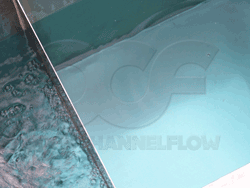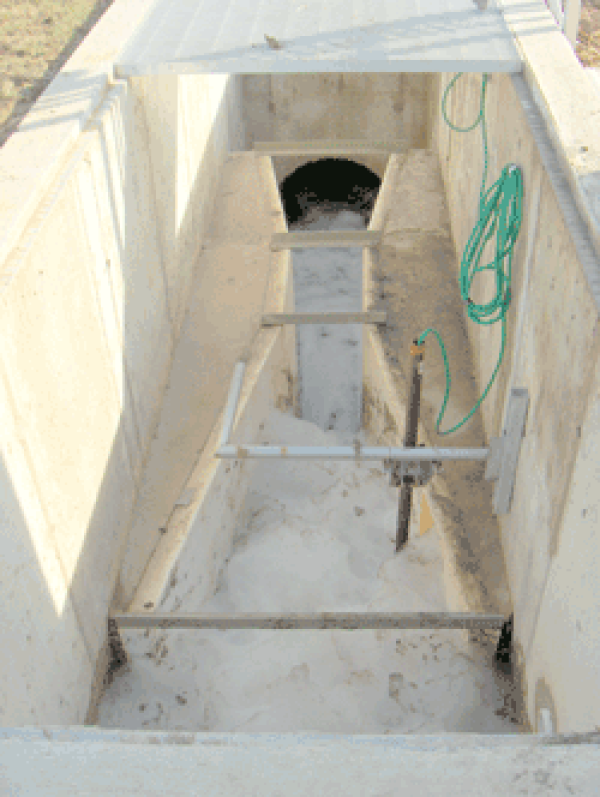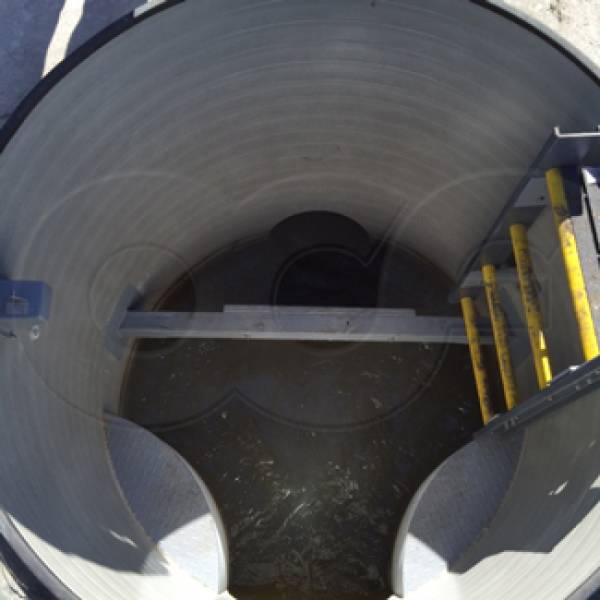This website uses a variety of cookies, which you consent to if you continue to use this site. You can read our Privacy Policy for
details about how these cookies are used, and to grant or withdraw your consent for certain types of cookies.
Baffled by (Weir) Baffle Plates?
 Weir boxes are frequently fabricated without the use of a baffle upstream of the point of measurement. The omission of a baffle plate (sometimes called a surge plate) saves both space and money, but at what cost? In applications where the velocity profile is normal and the approach channel is long, straight, and of a uniform cross-sectional area, baffle plates aren’t necessary – unfortunately many weir applications don’t posses these characteristics. For them, baffle plates can be the difference between success and failure.
Weir boxes are frequently fabricated without the use of a baffle upstream of the point of measurement. The omission of a baffle plate (sometimes called a surge plate) saves both space and money, but at what cost? In applications where the velocity profile is normal and the approach channel is long, straight, and of a uniform cross-sectional area, baffle plates aren’t necessary – unfortunately many weir applications don’t posses these characteristics. For them, baffle plates can be the difference between success and failure.
The most common use of baffle plates is to solve the problem of surface turbulence. An underflow baffle plate, which forces water to flow down and under the plate, is effective in curing surface turbulence. It is important that the baffle plate extend high enough about the water’s surface to ensure that turbulence or surges do not overtop the baffle plate.
A side benefit of the underflow baffle can be the reduction (or even elimination) of surface foam, which can render ultrasonic level measurements useless.
Baffles are particularly important when flow is piped into a weir pool. Without a baffle, the body of water of the weir pool is all that is available to normalize the velocity profile. Short-circuiting commonly occurs which in turn compromises the accuracy of the flow reading.
Baffles also aid the settling of suspended solids out of the flow stream. Normally this is a drawback, but for applications like dam seepage monitoring, it is critically important to capture sediments for the analysis of a dam’s overall health.
Baffles should be a minimum of one to two (1 to 2) times the maximum anticipated water depth (head) (Hmax) upstream of the point of measurement (Ha) of the weir. When more than one baffle is used, it is common for the last baffle to be an underflow baffle, with baffles spaced a minimum of 6-inches [15.24 cm] or two (2) Hmax (whichever is greater) apart.
Related Blog Posts
Explore more insights in our blog.

LOCATIONS IN ATLANTA, GA & BOISE, ID





